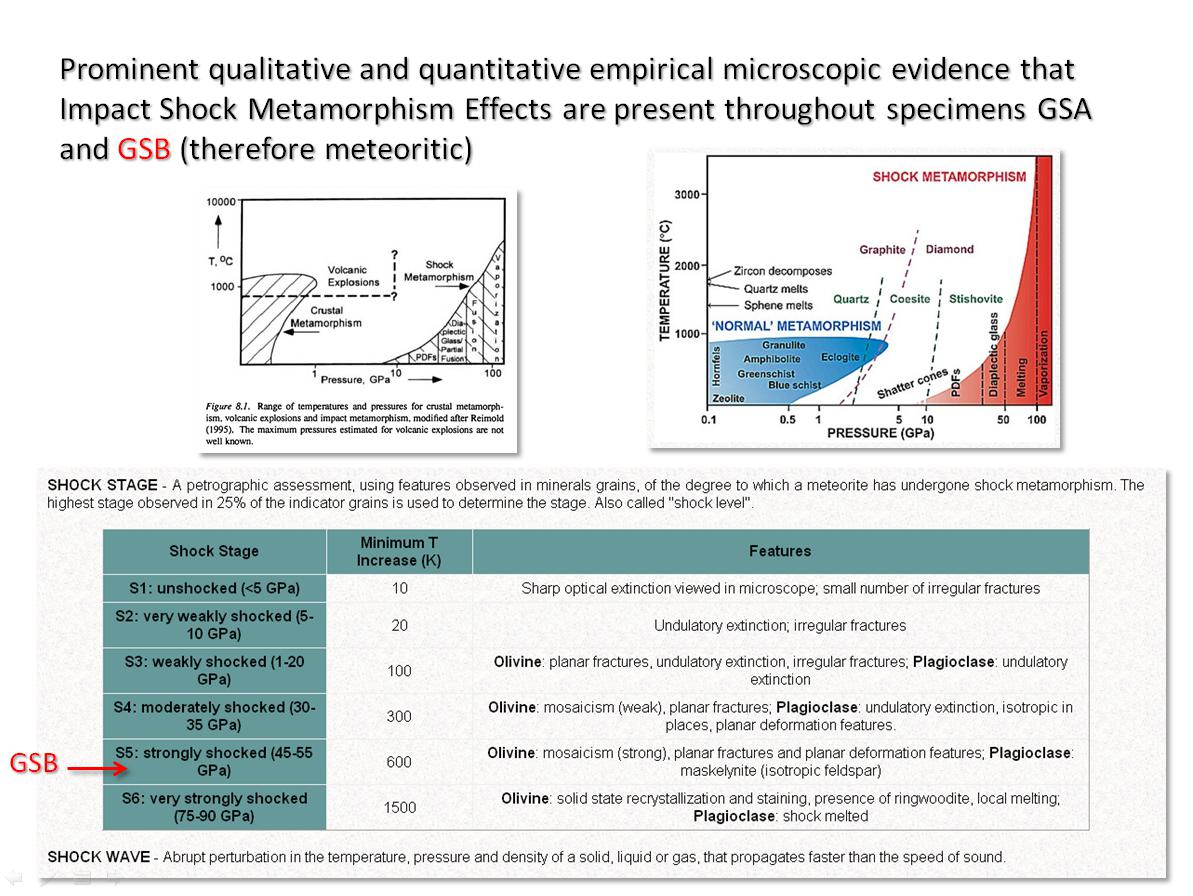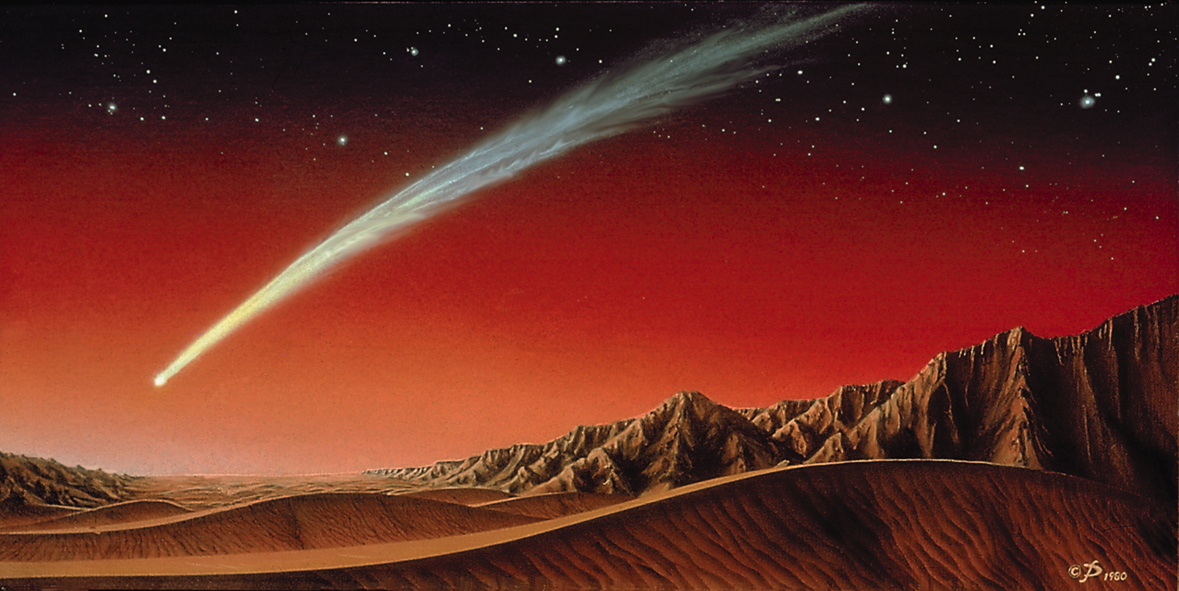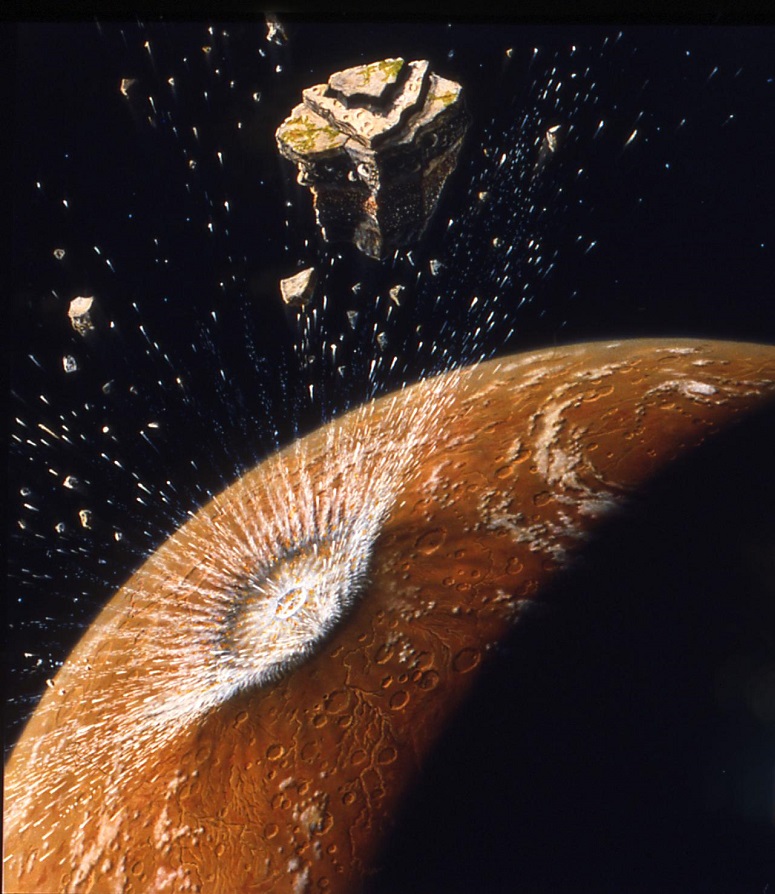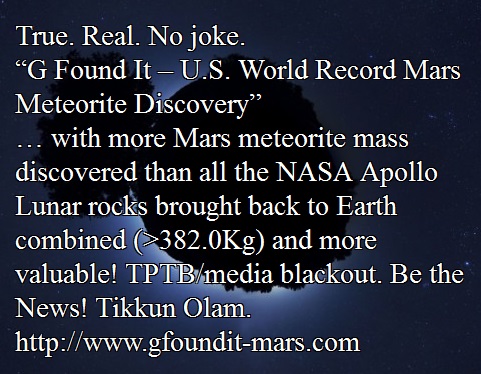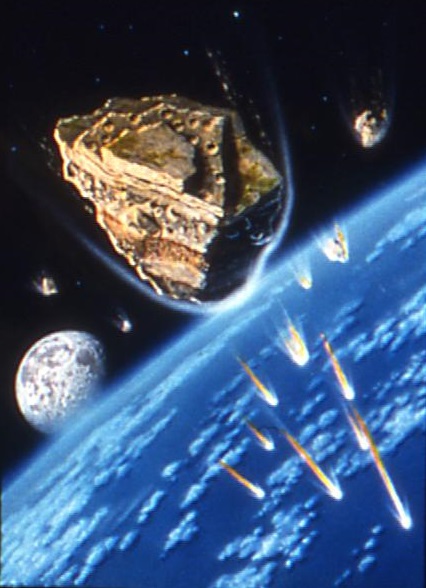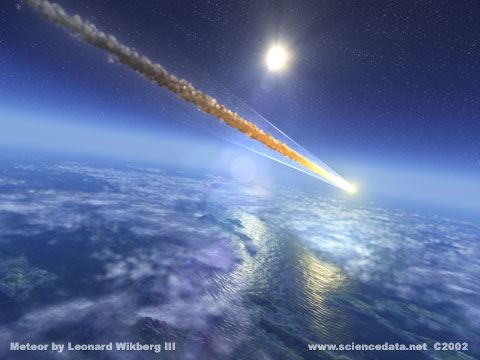
2 Galleries:
1st Gallery:
Typical key type meteorite indicator specimens of the U.S. World Record Mars Meteorite Discovery. (see below)
2nd Gallery:
World Record Mars Meteorite Specimens from the U.S. World Record Mars Meteorite Discovery. (see below)
The following gallery of stereopair images shows a selection of typical key type meteorite indicator specimens of varying masses from this U.S. World Record Mars Meteorite Discovery. This shows clearly the differentiation and heterogeneous mixture across this entire mars meteorite find, and that many of these meteorite specimens have combinations of two or more of the key type specimens within one meteorite rock mass. This indicates that the discovery is from a large heterogeneous meteoroid/asteroid launched from the surface of Mars with mixed lithologies that fell to Earth to be discovered.
All of these Mars meteorite specimens were found in the same exact discovery site footprint somewhere on Earth in the U.S.A. Since GSA and GSB are two typical key type indicator specimens of the entire discovery, and since both GSA and GSB are both proven meteorites, and since the parent body for both is proven to be Mars, then logically this indicates that all of these specimens derive from the same fall event, and all are meteoritic, and all are from Mars. The discovery site clearly indicated this as well.
Note, these are not the largest mass specimens shown here in this first gallery. Several larger mass specimens from this U.S. World Record Mars Meteorite Discovery are larger than the famous Zagami Mars Meteorite (18,000.0g; 18.0kg; 40.0 pounds). As stated, this discovery shatters all previous Mars meteorite discoveries, whether they were witnessed falls or finds. See the second gallery below to view a few of the World Record Specimens from the U.S. World Record Mars Meteorite Discovery (see below).
It is what it is.
G Found It - U.S. World Record Mars Meteorite
Discovery
March 27, 2013
http://www.rapidpressrelease.net/newswire/33463/g_found_it__us.asp
G Found It - U.S. World Record Mars Meteorite Discovery
March 27, 2013 /24-7PressRelease/

The third PR announcement article from 9-XX-2015:
The Gallery of World Record Mars Meteorite Specimens --
G Found It -- U.S. World Record Mars Meteorite Discovery
1st Gallery:
Typical key type meteorite indicator specimens of the
U.S. World Record Mars Meteorite Discovery:
(This gallery will be updated with additional stereographic images of meteoritic samples, their petrologic descriptions, and their measured masses. All are meteoritic samples from the same meteorite find the U.S. World Record Discovery site. Good things come to those who wait.)
1. GSP Mars meteorite: "Rubies for The Princess of Mars -- Deja Thoris"
(GSP is a Mars meteorite, an igneous extrusive volcanic rock, Intermediate-Felsic Dacite with aphanitic texture, an evolved lava, jet black in color, with inclusions of non-gem quality massive habit form pink Corundum xenoliths in vesicles. Also this specimen is oriented with regmalypts indicating the direction of fall as it passed through Earth's atmosphere. Mass = 6,500.0g = 6.5kg = 14.3 Pounds; Size approximately = 23.10cm(l) x 16.60cm(w) x 14.60cm(h))
Resources:
GIA Article -- Gem Corundum in Alkali Basalt: Origin and Occurence
Dacite
https://en.wikipedia.org/wiki/Dacite
Dacite on Mars: (an evolved Intermediate-Felsic
lava)
Complex Lavas
in Nili Patera
Evolved
lavas at Syrtis Major
Mars
has complex volcanic processes
Color: Jet Black with some pink XX
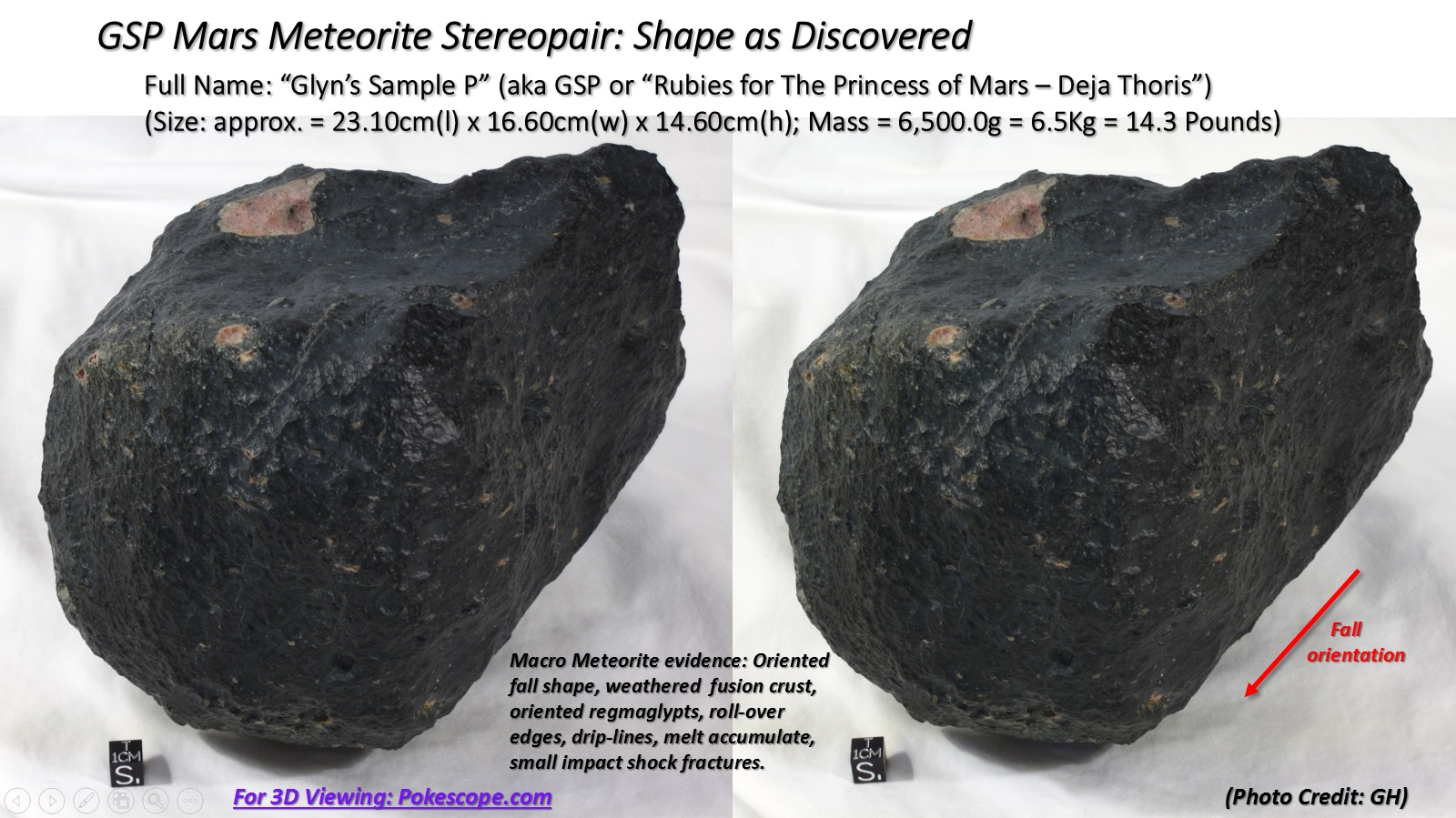
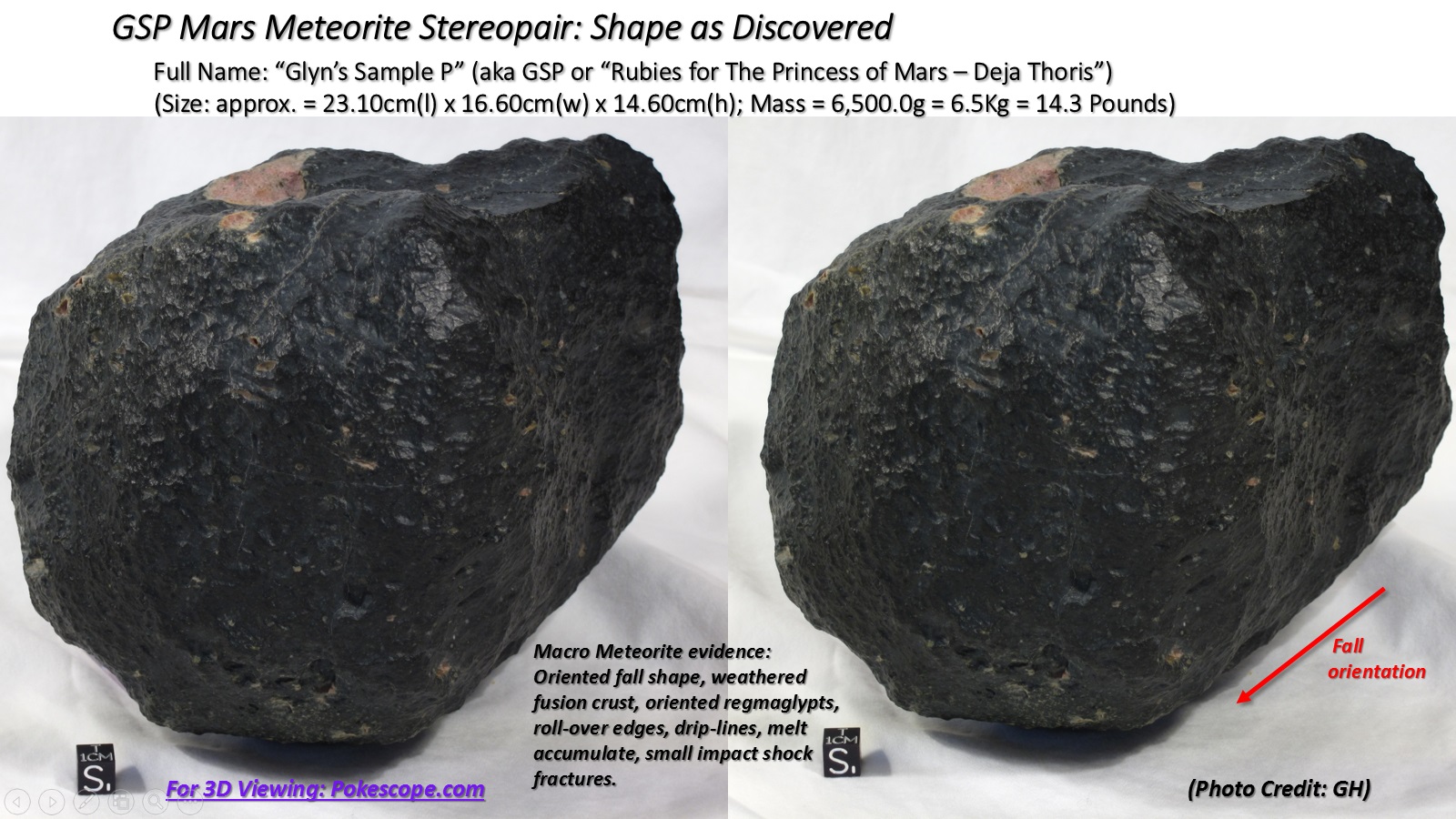

2. GSY Mars meteorite: "Bikkurim L'HaShem Adonai Yeshua HaMashiach"
(GSY is a Mars meteorite, an igneous extrusive volcanic rock, Intermediate-Felsic Dacite with aphanitic texture, an evolved lava, jet black in color. This specimen has a high concentration of FeOs and similar minerals. It is very magnetic as a result. Note the many classic regmalypts and that it is also oriented indicatcating the direction of fall as it passed through Earth's atmosphere. Mass = 644.7g; Size approximately = 13.0cm(l) x 8.5cm(w) x 9.0cm(h))
Color: Jet Black X
Resources:
Dacite
https://en.wikipedia.org/wiki/Dacite
Dacite on Mars: (an evolved Intermediate-Felsic
lava)
Complex Lavas
in Nili Patera
Evolved
lavas at Syrtis Major
Mars
has complex volcanic processes

3. GSB Mars meteorite: "The Real Black Beauty"
(GSB is a Mars meteorite, an igneous extrusive volcanic Intermediate-Felsic Dacite (SiO2 63.8%) rock, an evolved lava with aphanitic texture, and jet black in color. This specimen has many grains of FeOs and similar minerals. This specimen is also highly magnetic. Mass = 279.09g; Size approximately = 6.7cm(l) x 5.9cm(w) x 5.0cm(h))
Color: Jet Black X
Resources:
Dacite
https://en.wikipedia.org/wiki/Dacite
Dacite on Mars: (an evolved Intermediate-Felsic
lava)
Complex Lavas
in Nili Patera
Evolved
lavas at Syrtis Major
Mars
has complex volcanic processes


4. GSR Mars meteorite: "The Rosetta Stone"
(GSR is a Mars meteorite, approxiamently 3/4 igneous extrusive Intermediate-Felsic Dacite (SiO2 = 63 - 69%) , an "evolved lava", with approximately 1/4 igneous extrusive Ultramafic Komatiite Porphyry rock, a "primitive lava" with a porphyritic texture, jet black and dark green in color. This is a very unique mix of extrusive lavas within this one Mars meteorite, proving that they both extruded in-situ at the surface of Mars together and igneously combined, hence the name "The Rosetta Stone." However, both Dacite and Komatiite lavas have very different petrological origins here on Earth, and more than likely the same is true on Mars as well. Here on Earth for Komatiite, they primarily come from a young Earth deep within the mantle origins, the first primary type of lavas to extrude onto the surface of Earth approxiamently 4.0 - 2.5 Billion years ago, during the Archean Eon of Earth's geologic time, and now rare to find at the surface of Earth due to the rock cycle erasing much of the record. Here on Earth for Dacite, think late stage volcanic lava flows near the end of a volcanic eruptive cycle, and origin near oceanic and continental plate boundaries in upper mantle and Earth's crust. The same is likely similiar for Mars, however it's been indicated (via remote sensing) that Komatiite on Mars surface is much more common (and also found within the Syrtis Major Shield Volcano Province). For the two types of extrusive lava flows to mix as such is very unique. Here on Earth, Komatiite extrusive volcanic rock can have very high concentrations of "The Royal Group 11" (Cu, Ag, Au) metal elements as well as have very high concentrations of PGM's and Nickel, and are therefore a valuable ore. The valuable metal concentrations in both GSA and GSB Mars meteorites prove that is very true on Mars as well. (Mass = 405.5g; Size approximately = 11.90cm(l) x 6.10cm(w) x 5.0cm(h))
Color: 3/4 Jet Black and 1/4 Dark Green XX
Resources:
Dacite
https://en.wikipedia.org/wiki/Dacite
Dacite on Mars: (an evolved Intermediate-Felsic
lava)
Complex Lavas
in Nili Patera
Evolved
lavas at Syrtis Major
Mars
has complex volcanic processes
Komatiite
https://en.wikipedia.org/wiki/Komatiite
"Komatiites: From Earth's Geological Settings to Planetary and Astrobiological Contents"
http://arxiv.org/abs/physics/0512118
*Komatiite is strongly indicted within Syrtis Major Planum on Mars: (see pg. 24 - 27)
*Komatiite implictions in abiogenesis and early life on Earth, and Astrobiology: (see pg. 31 - 39)
*The Economic Geology importance of Komatiite on Earth: (see pg. 17- 22)
Phyllosilicates/Serpentine are indicated within Syrtis Major Planum on Mars:
Phyllosilicates - Serpentine on Mars:
Geologic
setting of serpentine deposits on Mars
Geology
of possible Martian methane source regions
Early Mars Environments Revealed Through
Near-Infrared Spectroscopy of Alteration Minerals
by Bethany List Ehlmann (PhD dissertation)
https://repository.library.brown.edu/studio/item/bdr:11132/
Cut and paste into a browser the following url to download the PhD dissertation by Ehlmann:
https://repository.library.brown.edu/fedora/objects/bdr:11132/datastreams/PDF/content
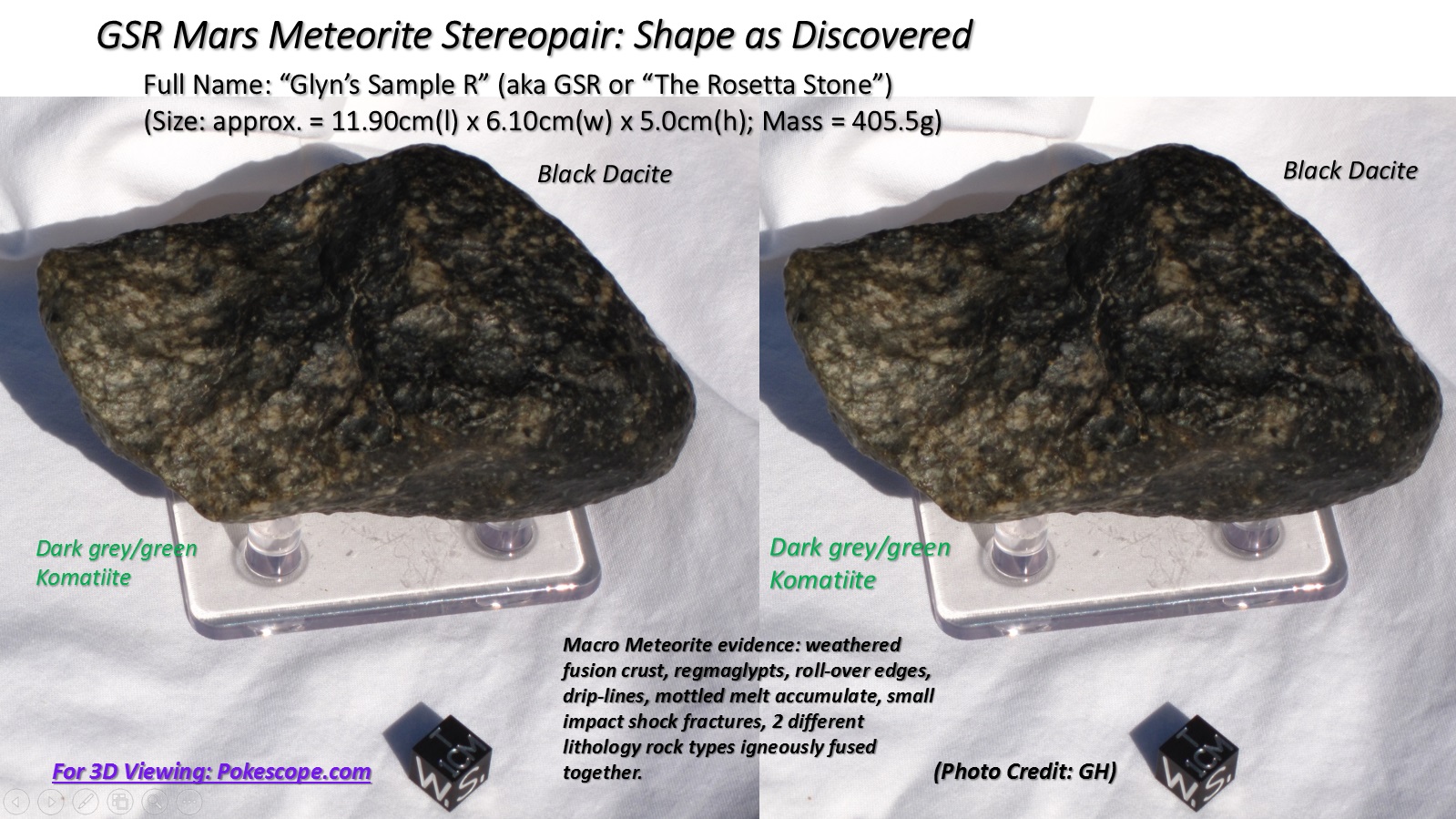

5. GSR2 Mars meteorite: "Rosetta Stone 2"
(GSR2 is a Mars meteorite, mixed Intermediate-Felsic Dacite (SiO2 = 63 - 69%) , an "evolved lava", with extrusive Ultramafic Komatiite Porphyry rock, a "primitive lava" with a porphyritic texture, jet black and lite green in color. This is a very unique mix of extrusive lavas within this one Mars meteorite, proving that they both extruded in-situ at the surface of Mars together and igneously combined, hence the name "Rosetta Stone 2." However, both Dacite and Komatiite lavas have very different petrological origins here on Earth, and more than likely the same is true on Mars as well. Here on Earth for Komatiite, they primarily come from a young Earth deep within the mantle origins, the first primary type of lavas to extrude onto the surface of Earth approxiamently 4.0 - 2.5 Billion years ago, during the Archean Eon of Earth's geologic time, and now rare to find at the surface of Earth due to the rock cycle erasing much of the record. Here on Earth for Dacite, think late stage volcanic lava flows near the end of a volcanic eruptive cycle, and origin near oceanic and continental plate boundaries in upper mantle and Earth's crust. The same is likely similiar for Mars, however it's been indicated (via remote sensing) that Komatiite on Mars surface is much more common (and also found within the Syrtis Major Shield Volcano Province). For the two types of extrusive lava flows to mix as such is very unique. Here on Earth, Komatiite extrusive volcanic rock can have very high concentrations of "The Royal Group 11" (Cu, Ag, Au) metal elements as well as have very high concentrations of PGM's and Nickel, and are therefore a valuable ore. The valuable metal concentrations in both GSA and GSB Mars meteorites prove that is very true on Mars as well. (Mass = 1430.0g = 1.43Kg = 3.15 Pounds; Size approximately = 16.0cm(l) x 9.95cm(w) x 7.90cm(h))
Color: Mostly Jet Black, with mixed lite Green XX
Resources: (see resources for GSR above)
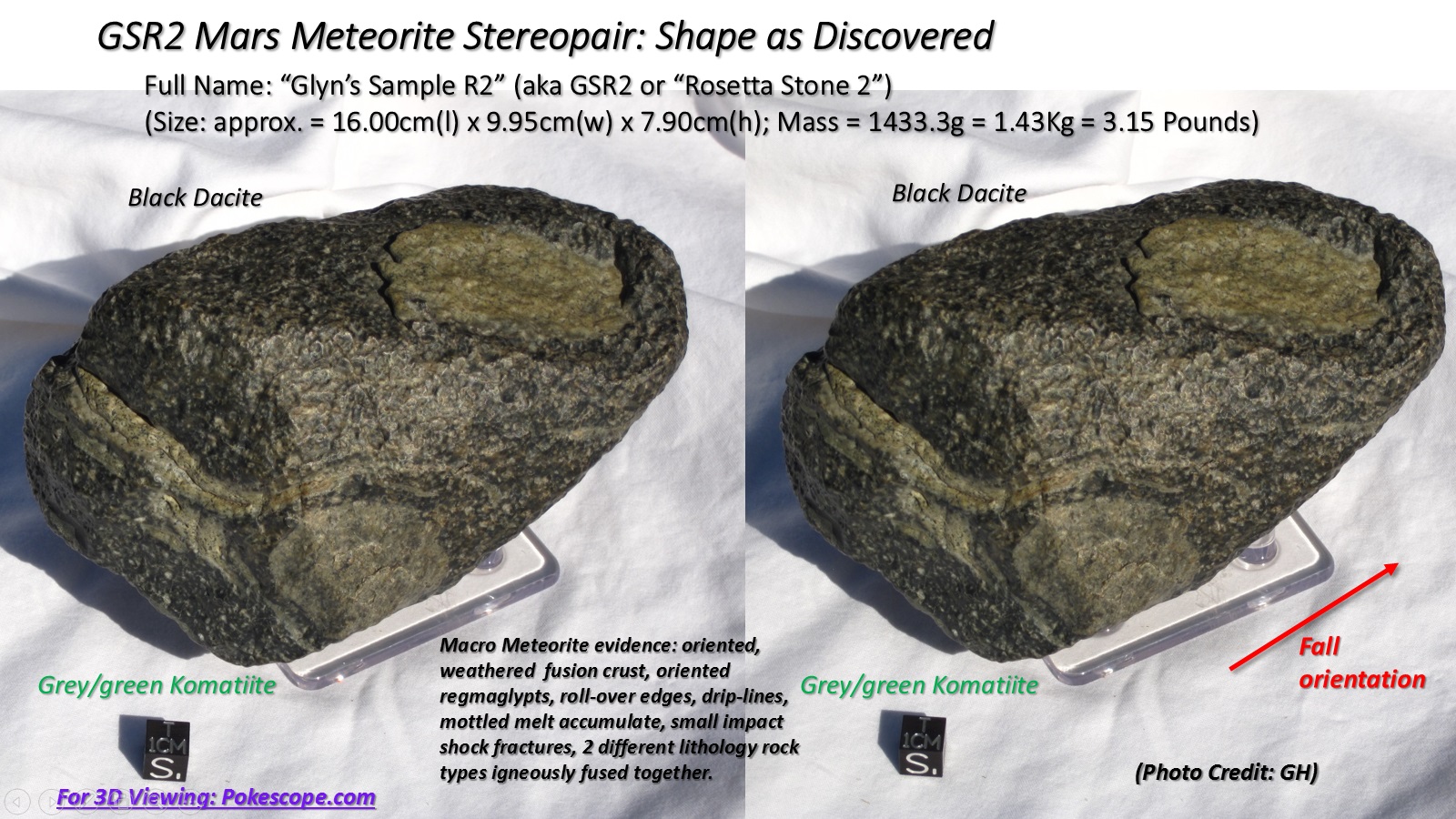

6. GSA Mars meteorite: "The Son of John Carter -- Carthoris"
(GSA is a Mars meteorite, an igneous extrusive Felsic Rhyolite (SiO2 77.1-77.9%) rock (tan), with blebs of extrusive igneous Ultramafic Komatiite/Phyllosilicates (Serpentine) (green), an evolved lava with porphyritic texture, and tan/green mottled in color. Mass = 364.49g; Size approximately = 8.0cm(l) x 6.8cm(w) x 6.0cm(h) )
Color: tan/green mottled XX
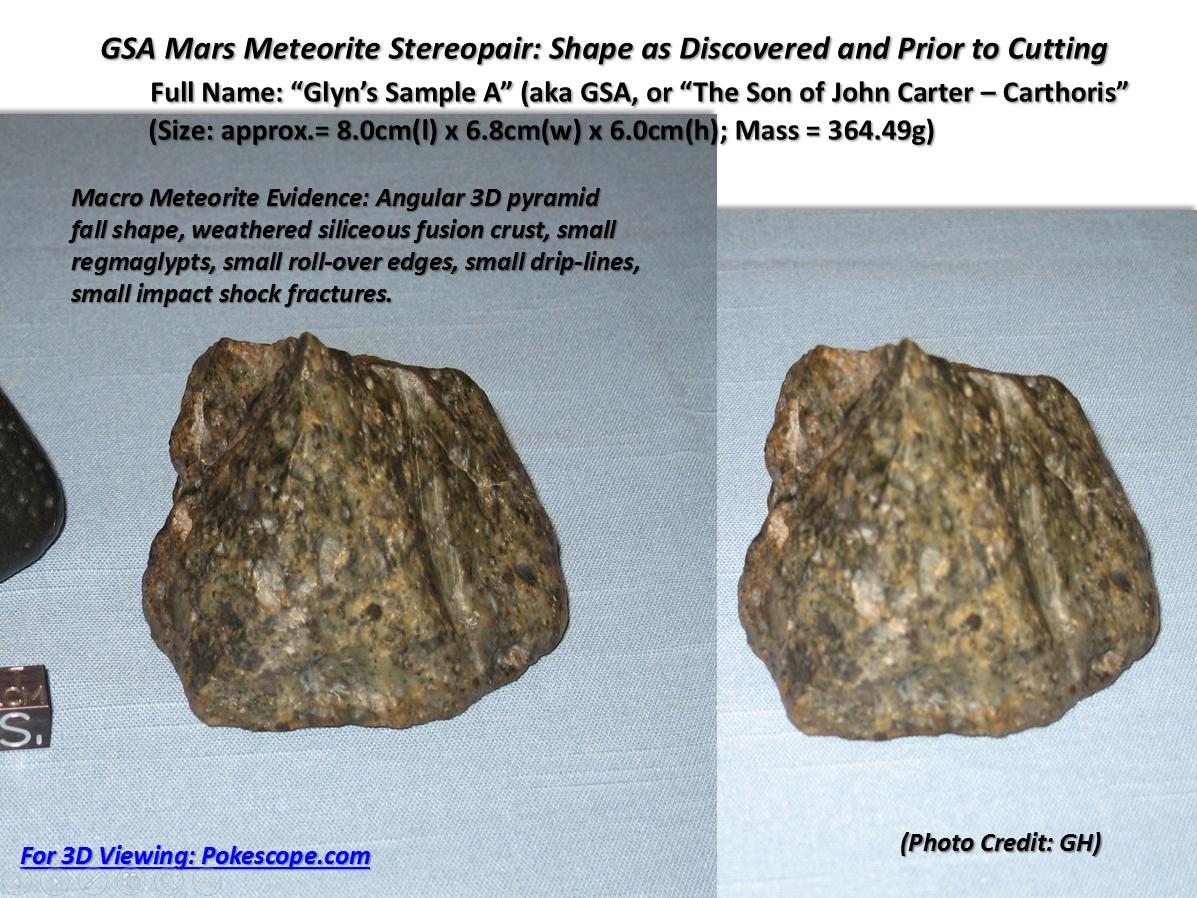
7. GSS2 Mars meteorite: "The Son of The 4th 'Stones of Fire' from The Sun" (aka "The Son of Barsoom")
(GSS2 is a Mars meteorite, ...
(Mass = XXXXXX.Xg = XX.Xkg; Size approximately = XX.Xcm(l) x XX.Xcm(w) x XX.Xcm(h))
Color: Dark Komatiite/Serpentine green, tan/green mottled, and tanXX
(This incredible Mars meteorite sample from this U.S. World Record Discovery will not be revealed until all agreements are finalized and settled)
8. GST Mars meteorite: "Tars Tarkas"
(GST is a Mars meteorite, an igneous extrusive Ultramafic Komatiite Porphyry rock, with a porphyritic texture, some black, dark green, with small translucent/opaque milk white inclusions of Coesite/Stishovite (Quartz --> Coesite/Stishovite from impact shock metamorphism) in color. These inclusions are harder than Mohs hardness 7 (quartz), perhaps a 7.5+, and as a result standout in relief being harder than the surrounding matrix. This is indicative of Coesite at a Mohs hardness of 7.5, or Stishovite with a Mohs hardness of 9 - 9.5. Also it seems to have igneous/metamorphic rock from the metamorphism or weathering of Komatiite, to Phyllosilicates -- Serpentine or Serpentinite. Dark Komatiite/Serpentine green in color, greasy to the feel and touch. Mass = 1900.00g = 1.90Kg; Size approximately = 17.40cm(l) x 11.20cm(w) x 8.85cm(h))
Color: Dark Komatiite/Serpentine green with translucent/opaque milk white inclusions XX
Resources:
Komatiite
https://en.wikipedia.org/wiki/Komatiite
"Komatiites: From Earth's Geological Settings to Planetary and Astrobiological Contents"
http://arxiv.org/abs/physics/0512118
*Komatiite is strongly indicted within Syrtis Major Planum on Mars: (see pg. 24 - 27)
*Komatiite implictions in abiogenesis and early life on Earth, and Astrobiology: (see pg. 31 - 39)
*The Economic Geology importance of Komatiite on Earth: (see pg. 17- 22)
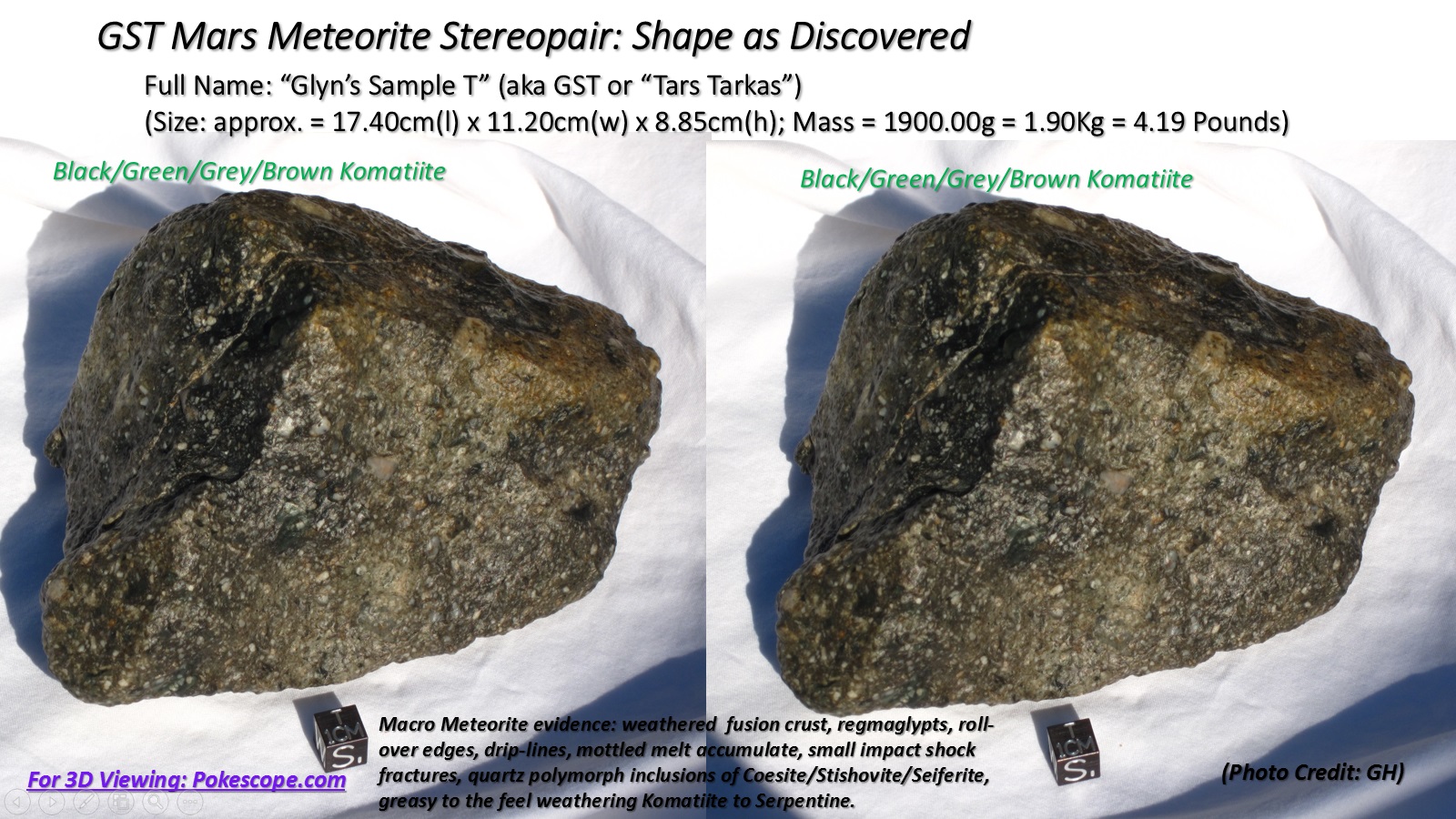

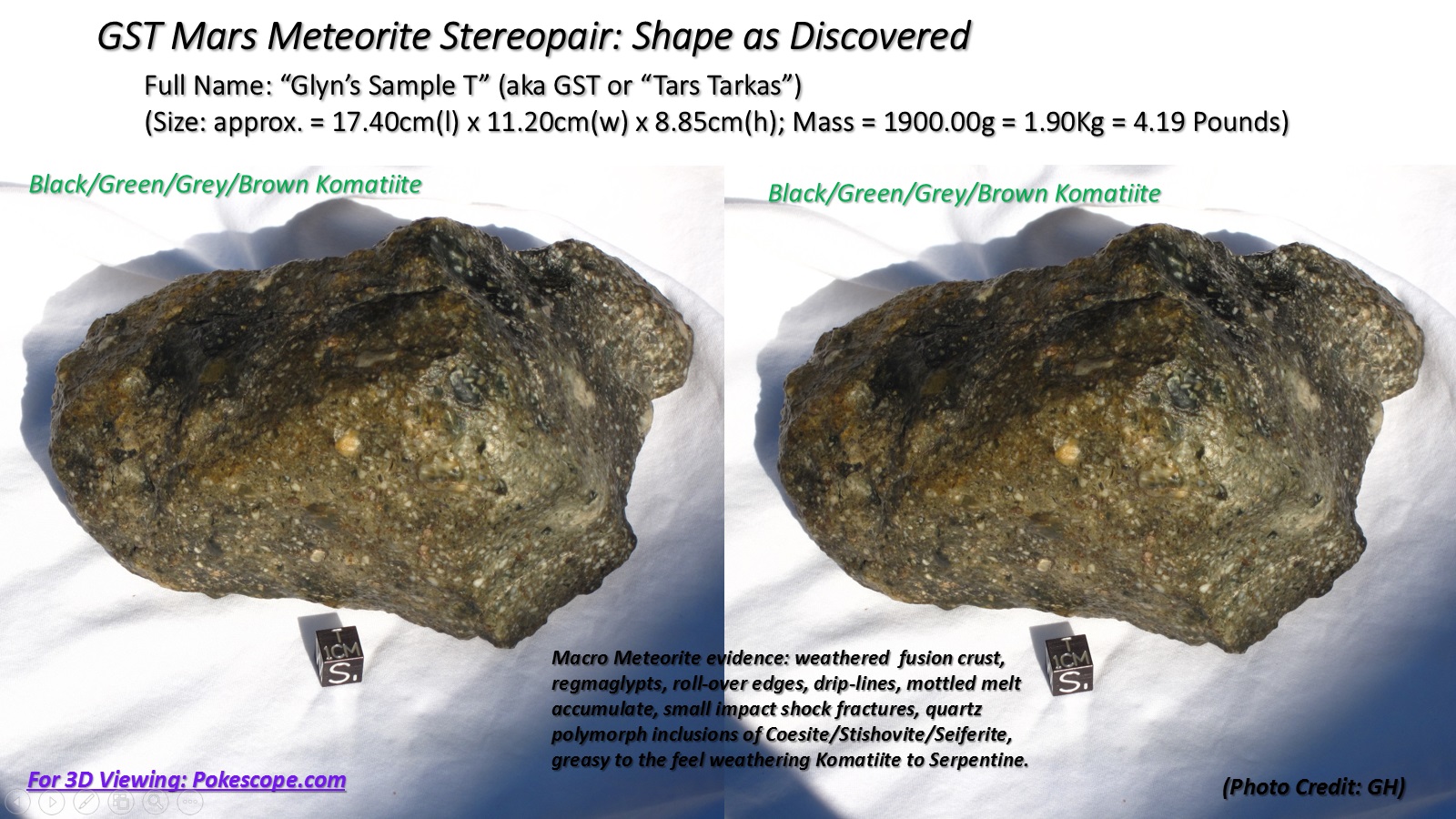
9. GSM Mars meteorite: "The Natural Hammer of The Angel of The Lord -- Metatron"
(GSM is a Mars meteorite, an igneous intrusive Quartz polymorph (SiO2 100%) mineral; it is Quartz that has been impact shocked metamorphosed and changed to Coesite/Stishovite, and translucent/opaque milk white in color. The incredible unique and special physical features of this Mars meteorite specimen from the discovery site are the complete and continuous clear siliceous fusion crust with small perfect regmalypts covering the entire mass. I call it "The Natural Hammer ...," since at the discovery site, I found it cracked perfectly in half (like an egg) resting on top of a small terrestrial rock that it came to fall/rest upon. A "hammer" meteorite is a meteorite that hits a man-made object or a living organism. Well, I say a "natural hammer" is a meteorite that hits a natural terrestrial object as opposed to just simply hitting the ground. In this case a Mars meteorite hitting an Earth rock. The natural hammer impact point on the bottom of this Mars meteorite is clearly seen as well. Absolutely unique. Mass = XXX.XXg; Size approximately = XX.Xcm(l) x X.Xcm(w) x X.Xcm(h))
Color: translucent/opaque milk white X
Resources:
Impact Shock Metamorphism:
https://en.m.wikipedia.org/wiki/Shock_metamorphism
Coesite:
https://en.m.wikipedia.org/wiki/Coesite
Stishovite:
https://en.m.wikipedia.org/wiki/Stishovite
Seiferite:
https://en.m.wikipedia.org/wiki/Seifertite
2nd Gallery:
World Record Mars Meteorite Specimens from the
U.S. World Record Mars Meteorite Discovery:
(This gallery will be updated with additional stereographic images of meteoritic samples, their petrologic descriptions, and their measured masses. All are meteoritic samples from the same meteorite find the U.S. World Record Discovery site. Good things come to those who wait.)
Of the following specimens from this U.S. World Record Mars Meteorite Discovery, many are a larger mass specimen than the famous Zagami Mars Meteorite (18,000.0g; 18.0kg; 40.0 pounds).
1. GSL Mars meteorite: "The Martian Leggo Blocks"
(GSL is a Mars meteorite, an igneous extrusive volcanic rock, Intermediate-Felsic Dacite, an evolved lava with aphanitic texture, jet black in color. A paired meteorite with both halves found near one another approxiamently 30.0cm apart at the discovery site. They fit perfectly together like a large 3D puzzle, like leggo blocks. The fusion crust is also less at the surfaces that join together, indicating that it started to separate in the Earth's atmosphere and separated completely when it impacted the ground. Mass = XXXXX.Xg = XX.Xkg; Size approximately = XX.Xcm(l) x XX.Xcm(w) x XX.Xcm(h))
Color: Jet Black X
Resources:
Dacite
https://en.wikipedia.org/wiki/Dacite
Dacite on Mars: (an evolved Intermediate-Felsic
lava)
Complex Lavas
in Nili Patera
Evolved
lavas at Syrtis Major
Mars
has complex volcanic processes
2. GSH Mars meteorite: "The Atmosphere of Mars & The City of Helium"
(GSH is a Mars meteorite, an igneous extrusive volcanic rock, Intermediate-Felsic Dacite, an evolved lava with aphanitic texture, jet black in color, with a fused siliceous layer that is translucent to clear and honey/amber in color in sunlight. The fused translucent siliceous layer that is honey/amber in color has within it many trapped gas bubbles below the surface that can be seen from when it was still molten, and then cooled rapidly capturing these large gas bubbles. This is a good example of volcanic flow banding. Mass = XXXXX.XXg = XX.XKg; Size approximately = XX.Xcm(l) x XX.Xcm(w) x XX.Xcm(h))
Resources:
Wikipedia -- Flow Banding
https://en.m.wikipedia.org/wiki/Flow_banding
Dacite
https://en.wikipedia.org/wiki/Dacite
Dacite on Mars: (an evolved Intermediate-Felsic
lava)
Complex Lavas
in Nili Patera
Evolved
lavas at Syrtis Major
Mars
has complex volcanic processes
Color: Jet Black with a fused siliceous translucent Honey/Amber layer XX
3. GSS1 Mars meteorite: "The 4th 'Stones of Fire' from The Sun" (aka "Barsoom")
(GSS1 is a Mars meteorite, an ...
(Mass = XXXXXX.XXg = XXX.XKg; Size approximately = XX.Xcm(l) x XX.Xcm(w) x XX.Xcm(h))
Color: Dark Komatiite/Serpentine green, tan/green mottled, and tan XX
(This incredible Mars meteorite sample from this U.S. World Record Discovery will not be revealed until all agreements are finalized and settled)
4. GSJ Mars meteorite: "Green Envy & the Astrobiology of Mars" (aka "Indiana Jones")
(GSJ is a Mars meteorite, an igneous extrusive/intrusive metamorphic rock, Komatiite/Phyllosilicate -- Serpentine or Serpentinite, dark Serpentine green in color with translucent/opaque milk white inclusions, greasy to the feel and touch. Mass = XXXXX.XXg = XX.XKg; Size approximately = XX.Xcm(l) x XX.Xcm(w) x XX.Xcm(h))
Color: Dark Komatiite/Serpentine Green with translucent/opaque milk white inclusions XX
Resources:
Komatiite
https://en.wikipedia.org/wiki/Komatiite
Komatiites: From Earth's Geological Settings to Planetary and Astrobiological Contents
http://arxiv.org/abs/physics/0512118
Mars was a Water World, July 19, 2008
New Findings Show Diverse, Wet Environments on Ancient Mars
http://www.astrobio.net/topic/solar-system/mars/when-mars-was-a-water-world/
Phyllosilicates (Sheet Silicates)
http://www.tulare.edu/~sanelson/eens211/phyllosilicates.htm
California Geological Survey: Serpentine California State Rock, Note 14
http://www.conservation.ca.gov/cgs/information/publications/cgs_notes/note_14/Documents/note_14.pdf
Evidence for methane in Martian meteorites
http://www.nature.com/ncomms/2015/150616/ncomms8399/full/ncomms8399.html
5. GSK Mars meteorite: "The Stone The Builders Rejected has become The Cornerstone" (aka "The Crystal Skull")
(GSK is a Mars intrusive igneous Quartz polymorph (SiO2 100%) mineral mass; it is Quartz that has been impact shocked metamorphosed and changed to Coesite/Stishovite, and translucent/opaque milk white/tan in color. It has a Mohs Hardness > 7 (quartz); approx. 7.5, or 9 - 9.5?, indicating Coesite or Stishovite. The incredible unique and special physical features of this Mars meteorite specimen from the discovery site is the complete and continuous clear siliceous fusion crust with unique 3D shaped fusion crust horns, and regmalypts that formed as it fell through the Earth's atmosphere. It is "a paired meteorite" with 3 pieces found near one another that fit together. One large mass fragment with one small mass fragment sitting under it, and the other large mass was found about 10.0m away at the discovery site. They roughly fit together like a large 3D puzzle. The fusion crust is also less at the surfaces that join together, indicating that it started to separate high in the Earth's atmosphere but separated completely before impacting the ground here on Earth. Mass = XXXXX.XXg = XX.XKg; Size approximately = XX.Xcm(l) x XX.Xcm(w) x XX.Xcm(h))
Color: translucent/opaque milk white/tan XX
Resources:
Impact Shock Metamorphism:
https://en.m.wikipedia.org/wiki/Shock_metamorphism
Coesite:
https://en.m.wikipedia.org/wiki/Coesite
Stishovite:
https://en.m.wikipedia.org/wiki/Stishovite
Seiferite:
https://en.m.wikipedia.org/wiki/Seifertite
